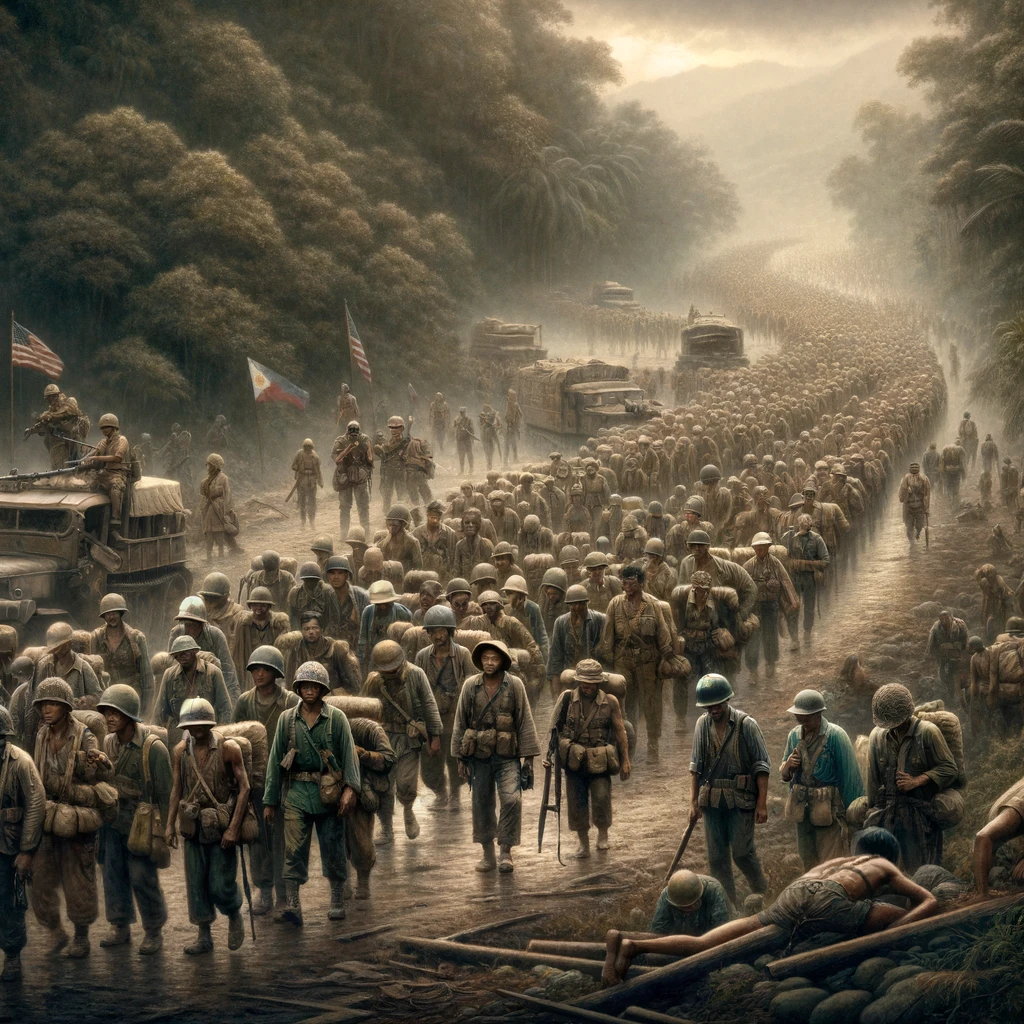The Bataan Death March was a harrowing episode during World War II, a grim testament to the brutalities of war and the indomitable spirit of those who endured. This event unfolded in the Philippines in 1942, after the United States and Filipino forces surrendered to the Japanese on the Bataan Peninsula.
Historical Context
The backdrop of the Bataan Death March is set in the early stages of the Pacific War. Following the attack on Pearl Harbor, Japanese forces quickly moved to seize control of the Philippines, a strategic location under American colonial rule. Despite fierce resistance, American and Filipino defenders were pushed back to the Bataan Peninsula, where they made a last stand.
The Fall of Bataan
After months of intense fighting and enduring harsh conditions with little resupply, the combined American-Filipino forces on Bataan were compelled to surrender on April 9, 1942. The surrender was the largest in American and Filipino military history, involving around 75,000 troops.
The March
Following their surrender, the prisoners were subjected to the Bataan Death March. The march involved a forced transfer of 60-70 miles from Mariveles and Bagac, Bataan, to San Fernando, Pampanga, and then by train to Camp O’Donnell in Capas, Tarlac. The exact length of the march varied, as prisoners were taken via different routes.
The conditions were atrocious: intense heat, harsh treatment from the guards, and little to no provisions for food, water, or medical care. The exact number of deaths is difficult to pinpoint, but estimates suggest that thousands of Filipinos and hundreds of Americans died due to starvation, dehydration, disease, and outright execution.
War Crimes
The brutal treatment of the prisoners during the march and subsequent internment was later classified as a war crime. Japanese commanders involved were held accountable in post-war trials, with General Masaharu Homma being executed for his role in the atrocities.
Legacy and Remembrance
The Bataan Death March is remembered as a symbol of both the cruelty of war and the resilience of the human spirit. Memorials and events, such as the annual Bataan Memorial Death March in the United States, honor the victims and survivors, ensuring that the horrors of the march and the courage of those who endured are not forgotten.
In conclusion, the Bataan Death March stands as a somber reminder of the atrocities of war, the resilience of the human spirit, and the enduring bond between the United States and the Philippines forged in the fires of World War II. It serves as a testament to the horrors that soldiers and civilians can endure, and the importance of remembering history’s harsh lessons to prevent such tragedies in the future.
